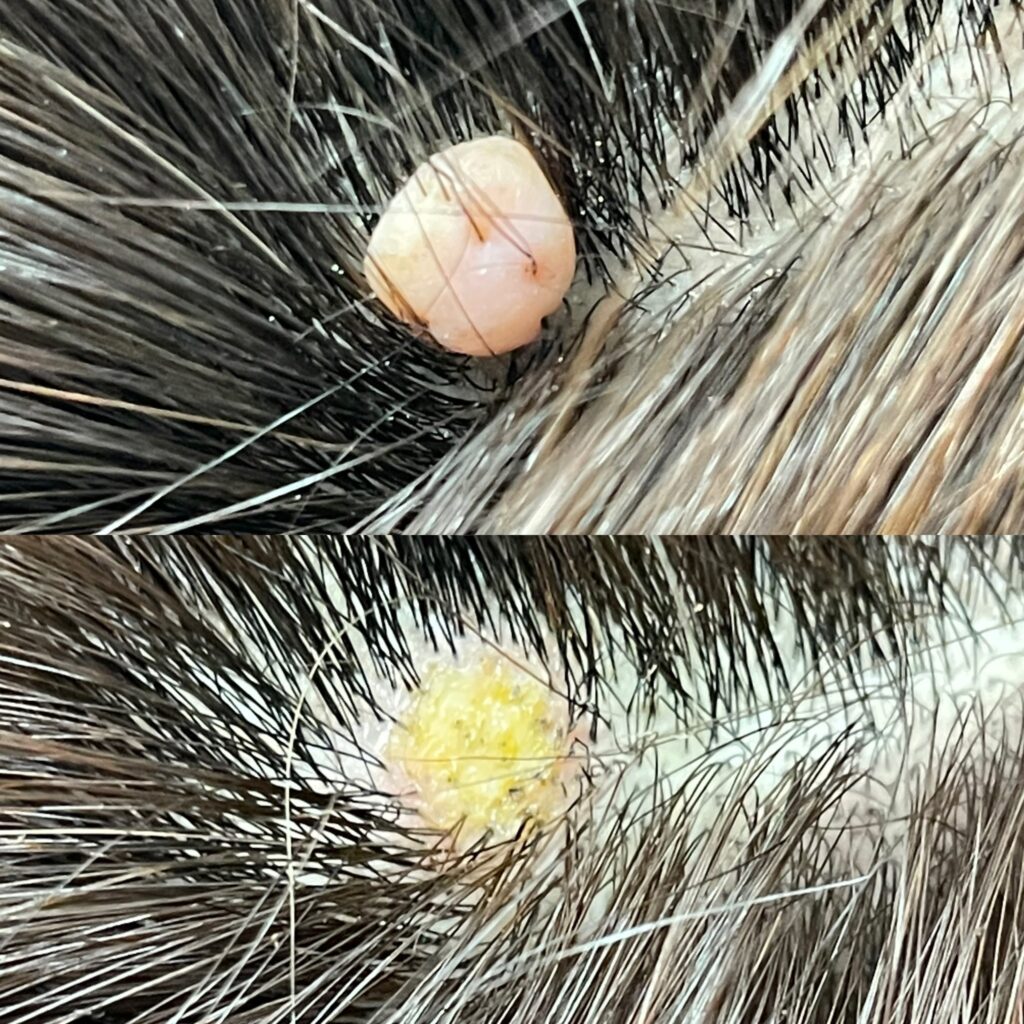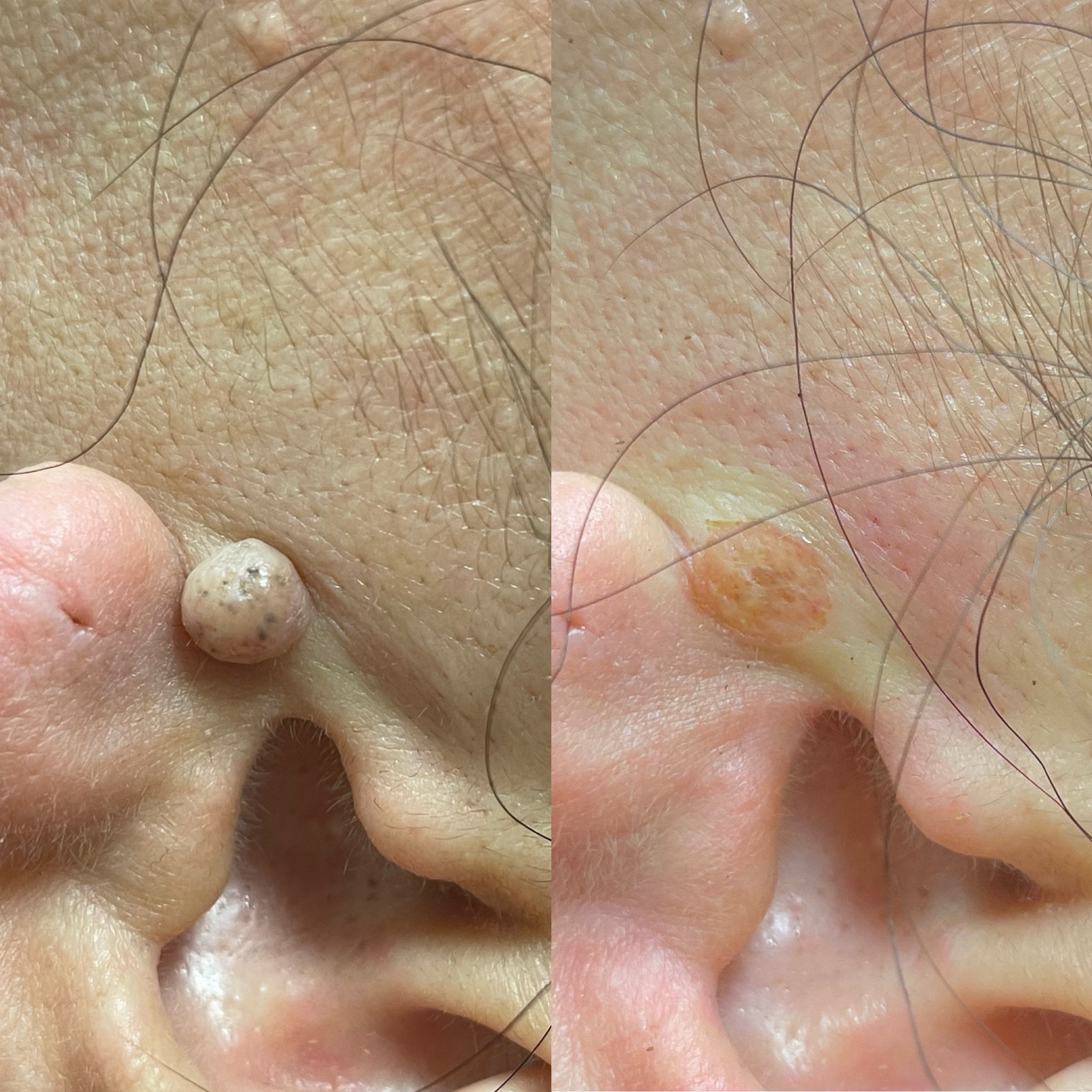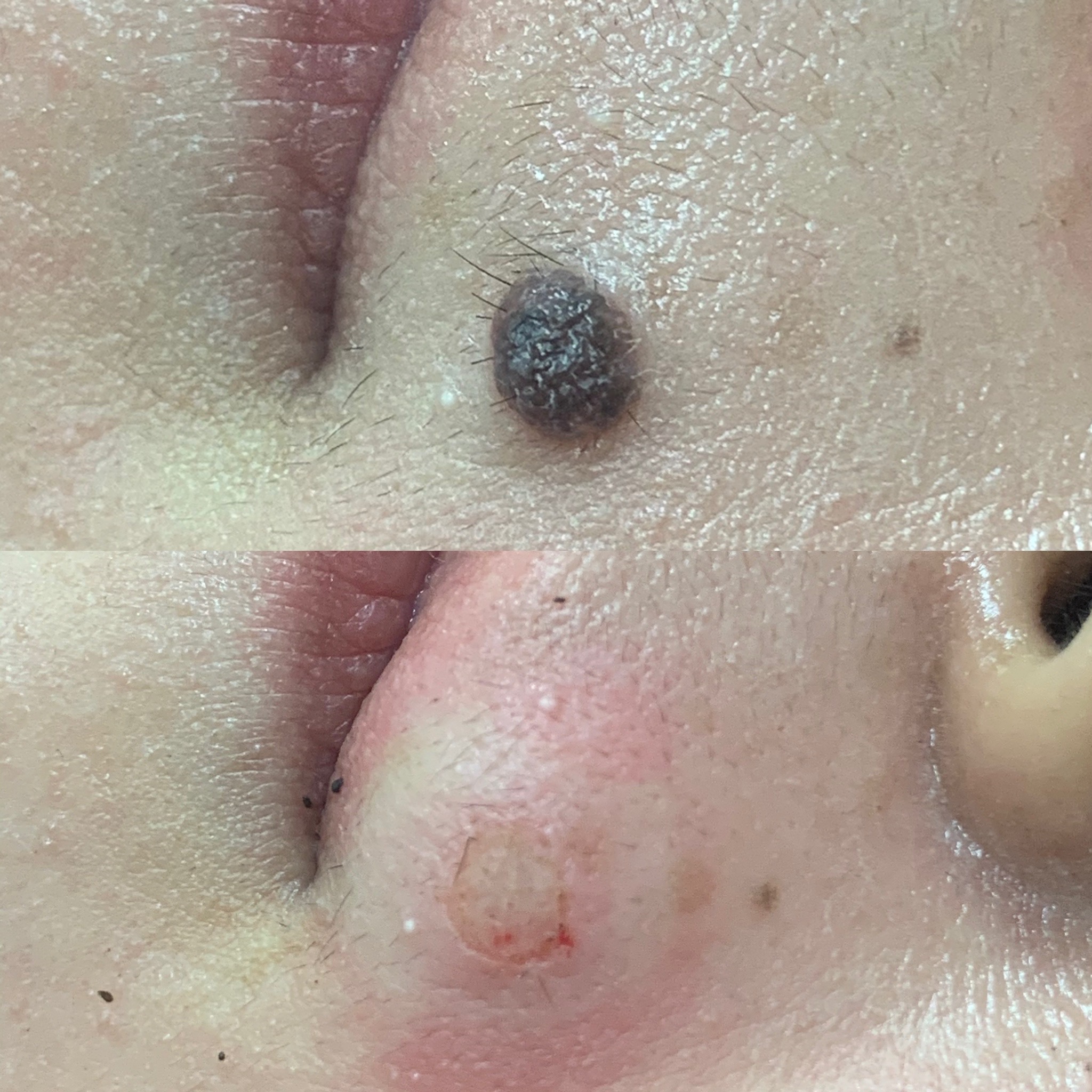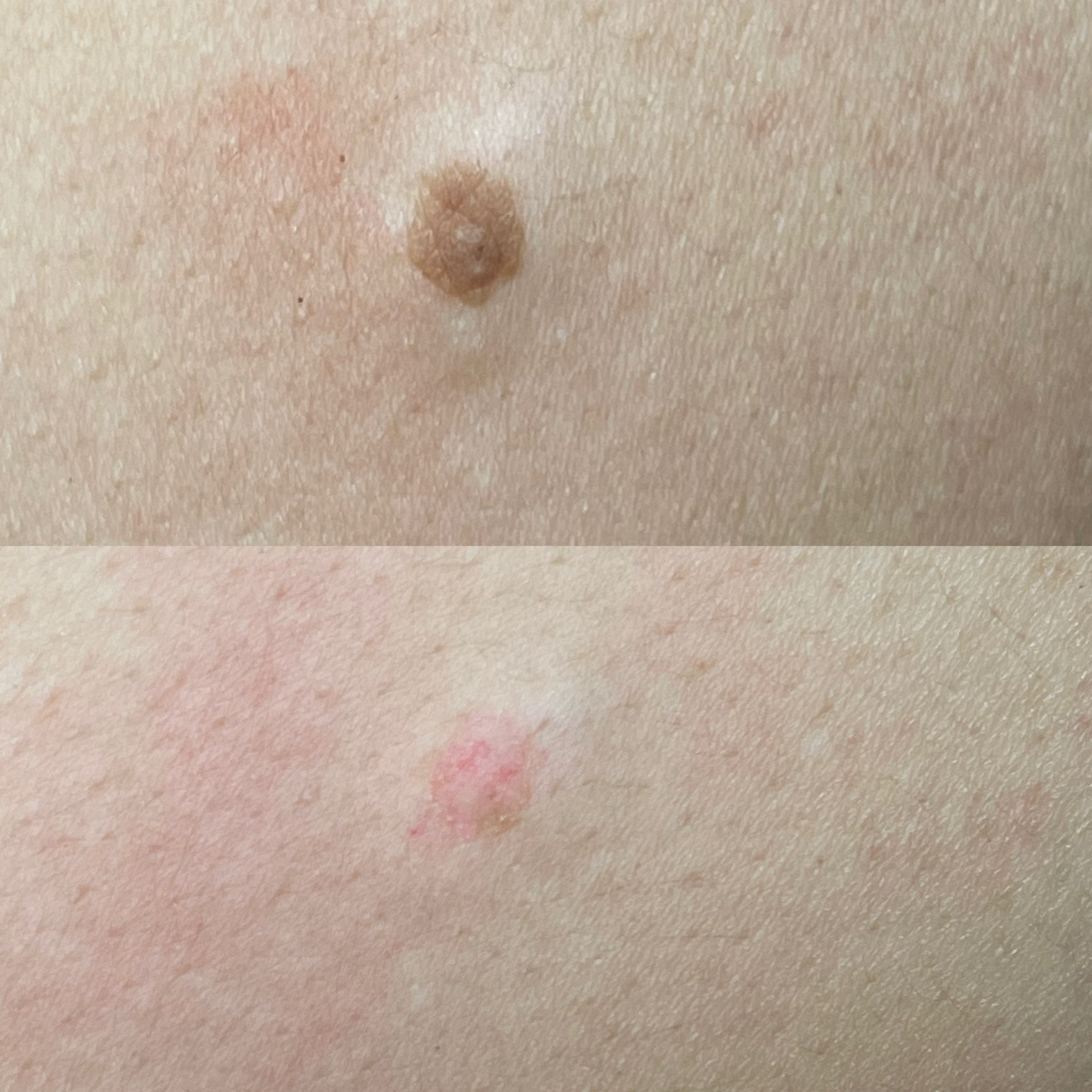Reading Time: <1 minuteMoles are removed using mole excision, carbon dioxide laser treatment, and electrolysis.There are two methods for mole removal: hollowing and incision.As the name suggests, the hollowing method is a method of removing a mole by hollowing it out with a scalpel.
 Scar condition immediately after mole treatment
Scar condition immediately after mole treatment
This is sometimes done using an instrument called a trepan, but it is a treatment method in which the mole is excised from the edge using a scalpel and the scar is healed by swelling of the granulation and epithelialization without suturing.The advantages are that it does not require any technical skills, that it can be treated without the use of special equipment, and that the treatment can be completed in a short time, but these are all benefits for the doctor and have little benefit for the patient. .This is a treatment that should not be performed unless malignancy is suspected.The incision method involves cutting out the normal skin containing the mole in a spindle shape and suturing it.The advantages are that the mole can be completely eliminated and there is no possibility of recurrence, and pathological examination is easily possible, allowing treatment even after it is determined to be a malignant tumor.about it.
 Scar condition immediately after mole treatment
Scar condition immediately after mole treatment
The disadvantages are that the scar remains larger than the diameter of the mole, there is downtime, stitches need to be removed, and a hospital visit is always required.If malignancy is suspected, a pathological examination of the skin tumor removed using this treatment is performed to confirm that it is not malignant and to confirm the pathological diagnosis.Currently, screening to diagnose whether a mole is malignant or benign is performed using dermoscopy, and if a possibility of malignancy is suspected, the tumor must be removed and a pathological diagnosis performed.Because it is outsourced, it will take approximately one week for the test results to be confirmed.
 Scar condition immediately after mole treatment
Scar condition immediately after mole treatment
 Scar condition immediately after mole treatment
This is sometimes done using an instrument called a trepan, but it is a treatment method in which the mole is excised from the edge using a scalpel and the scar is healed by swelling of the granulation and epithelialization without suturing.The advantages are that it does not require any technical skills, that it can be treated without the use of special equipment, and that the treatment can be completed in a short time, but these are all benefits for the doctor and have little benefit for the patient. .This is a treatment that should not be performed unless malignancy is suspected.The incision method involves cutting out the normal skin containing the mole in a spindle shape and suturing it.The advantages are that the mole can be completely eliminated and there is no possibility of recurrence, and pathological examination is easily possible, allowing treatment even after it is determined to be a malignant tumor.about it.
Scar condition immediately after mole treatment
This is sometimes done using an instrument called a trepan, but it is a treatment method in which the mole is excised from the edge using a scalpel and the scar is healed by swelling of the granulation and epithelialization without suturing.The advantages are that it does not require any technical skills, that it can be treated without the use of special equipment, and that the treatment can be completed in a short time, but these are all benefits for the doctor and have little benefit for the patient. .This is a treatment that should not be performed unless malignancy is suspected.The incision method involves cutting out the normal skin containing the mole in a spindle shape and suturing it.The advantages are that the mole can be completely eliminated and there is no possibility of recurrence, and pathological examination is easily possible, allowing treatment even after it is determined to be a malignant tumor.about it.
 Scar condition immediately after mole treatment
The disadvantages are that the scar remains larger than the diameter of the mole, there is downtime, stitches need to be removed, and a hospital visit is always required.If malignancy is suspected, a pathological examination of the skin tumor removed using this treatment is performed to confirm that it is not malignant and to confirm the pathological diagnosis.Currently, screening to diagnose whether a mole is malignant or benign is performed using dermoscopy, and if a possibility of malignancy is suspected, the tumor must be removed and a pathological diagnosis performed.Because it is outsourced, it will take approximately one week for the test results to be confirmed.
Scar condition immediately after mole treatment
The disadvantages are that the scar remains larger than the diameter of the mole, there is downtime, stitches need to be removed, and a hospital visit is always required.If malignancy is suspected, a pathological examination of the skin tumor removed using this treatment is performed to confirm that it is not malignant and to confirm the pathological diagnosis.Currently, screening to diagnose whether a mole is malignant or benign is performed using dermoscopy, and if a possibility of malignancy is suspected, the tumor must be removed and a pathological diagnosis performed.Because it is outsourced, it will take approximately one week for the test results to be confirmed.
 Scar condition immediately after mole treatment
Scar condition immediately after mole treatment




